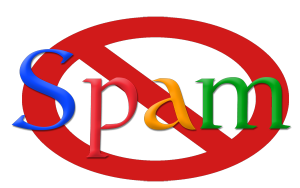Google Penguin Update: A Lesson In Cloaking

There are a number of reasons your site might have been hit by Google’s recent Penguin update(formerly known as the Web-spam update). Barring any unintended penalties, the algorithm has wiped out sites engaging in web-spam and black hat SEO tactics. In other words, Google has targeted any site that is violating its quality guidelines. With that in mind, it seems like a good idea to take a good look at these guidelines.
Here are some articles about:
Hidden Text And Links
Get Better At Links
Keyword Stuffing
One major thing you need to avoid (or in hindsight, should have avoided) is cloaking, which is basically just showing Google something different than you’re showing users. Google’s Matt Cutts did a nice, big video about cloaking last summer. He calls it the “definitive cloaking video,” so if you have any concern that you may be in the wrong on this, you’d better watch this. It’s nearly 9 minutes long, so he packs in a lot of info.
[custom_frame_center shadow=”on”][/custom_frame_center]
Cloaking is “definitely high risk,” Cutts says in the video.
With Penguin, there’s been a lot more talk about bad links costing sites. Link schemes are specifically mentioned in Cutts’ announcement of the Penguin update, and Google has been sending webmasters a lot of messages about questionable links recently. That’s definitely something you don’t want to ignore.
 But while Google didn’t mention cloaking specifically in the announcement, it did say the update “will decrease rankings for sites that we believe are violating Google’s existing quality guidelines.” Cloaking fits that bill. Google divides its quality guidelines into basic principles and specific guidelines. Cloaking appears in both sections.
But while Google didn’t mention cloaking specifically in the announcement, it did say the update “will decrease rankings for sites that we believe are violating Google’s existing quality guidelines.” Cloaking fits that bill. Google divides its quality guidelines into basic principles and specific guidelines. Cloaking appears in both sections.
“Make pages primarily for users, not for search engines,’ Google says in the Basic Principles section. “Don’t deceive your users or present different content to search engines than you display to users, which is commonly referred to as ‘cloaking.’”
In the Specific Guidelines section, Google says, “Don’t use cloaking or sneaky redirects.” This has its own page in Google’s help center. Specific examples mentioned include: serving a page of HTML text to search engines, while showing a page of images or flash to users, and serving different content to search engines than to users.
“If your site contains elements that aren’t crawlable by search engines (such as rich media files other than Flash, JavaScript, or images), you shouldn’t provide cloaked content to search engines,” Google says in the help center. “Rather, you should consider visitors to your site who are unable to view these elements as well.”
Google suggests using alt text that describes images for users with screen readers or images turned off in their browsers, and providing textual contents of JavaScript in a noscript tag. “Ensure that you provide the same content in both elements (for instance, provide the same text in the JavaScript as in the noscript tag),” Google notes. “Including substantially different content in the alternate element may cause Google to take action on the site.”
Also discussed in this section of Google’s help center are sneaky JavaScript redirects and doorway pages.

